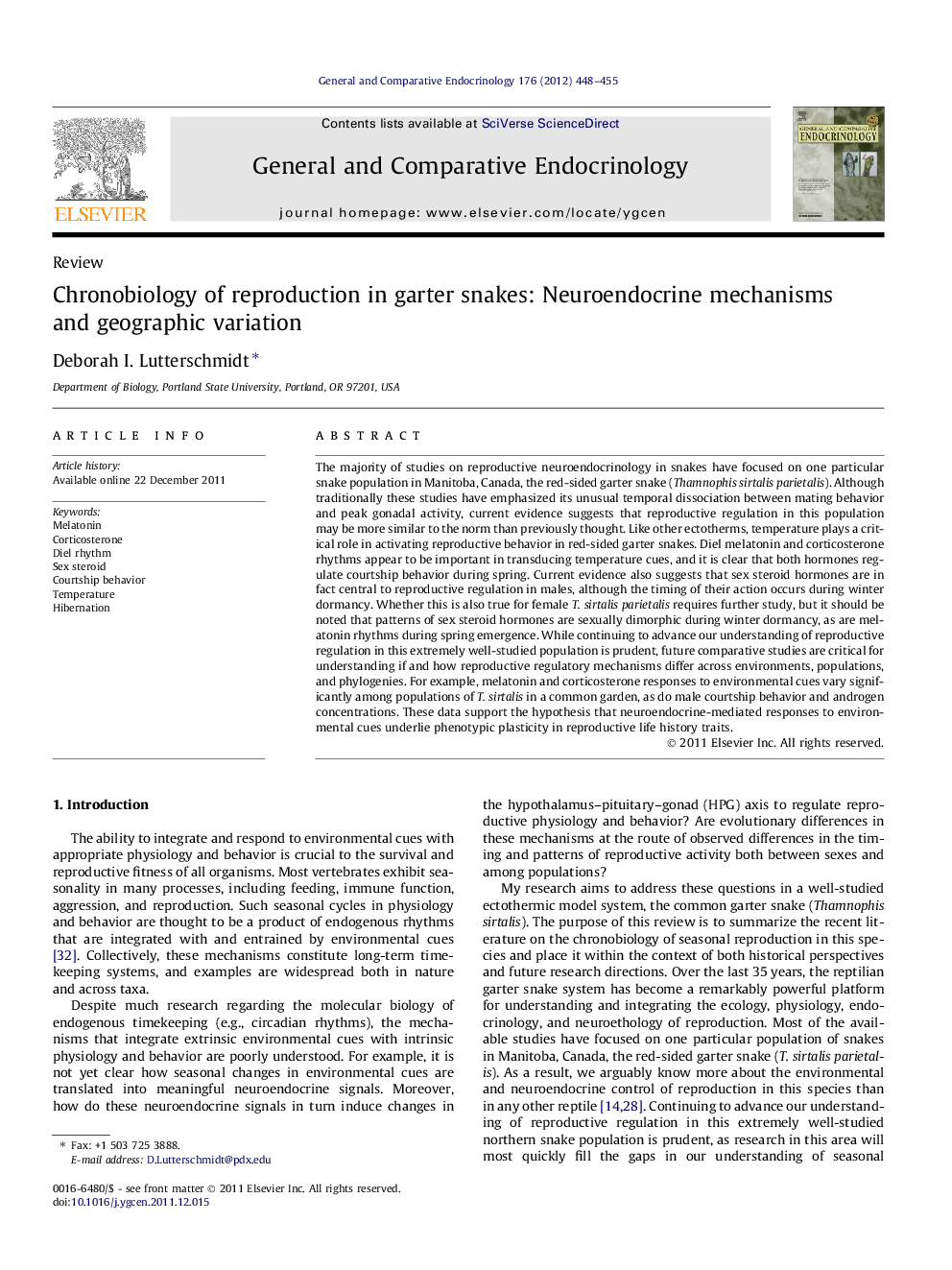| کد مقاله | کد نشریه | سال انتشار | مقاله انگلیسی | نسخه تمام متن |
|---|---|---|---|---|
| 2800590 | 1156116 | 2012 | 8 صفحه PDF | دانلود رایگان |

The majority of studies on reproductive neuroendocrinology in snakes have focused on one particular snake population in Manitoba, Canada, the red-sided garter snake (Thamnophis sirtalis parietalis). Although traditionally these studies have emphasized its unusual temporal dissociation between mating behavior and peak gonadal activity, current evidence suggests that reproductive regulation in this population may be more similar to the norm than previously thought. Like other ectotherms, temperature plays a critical role in activating reproductive behavior in red-sided garter snakes. Diel melatonin and corticosterone rhythms appear to be important in transducing temperature cues, and it is clear that both hormones regulate courtship behavior during spring. Current evidence also suggests that sex steroid hormones are in fact central to reproductive regulation in males, although the timing of their action occurs during winter dormancy. Whether this is also true for female T. sirtalis parietalis requires further study, but it should be noted that patterns of sex steroid hormones are sexually dimorphic during winter dormancy, as are melatonin rhythms during spring emergence. While continuing to advance our understanding of reproductive regulation in this extremely well-studied population is prudent, future comparative studies are critical for understanding if and how reproductive regulatory mechanisms differ across environments, populations, and phylogenies. For example, melatonin and corticosterone responses to environmental cues vary significantly among populations of T. sirtalis in a common garden, as do male courtship behavior and androgen concentrations. These data support the hypothesis that neuroendocrine-mediated responses to environmental cues underlie phenotypic plasticity in reproductive life history traits.
► This review summarizes the reproductive neuroendocrinology of garter snakes.
► Temperature plays a critical role in activating reproductive behavior.
► Melatonin and corticosterone rhythms transduce temperature and regulate courtship.
► Hormonal responses to environmental cues vary between sexes and among populations.
► This variation may mediate phenotypic plasticity in reproductive timing.
Journal: General and Comparative Endocrinology - Volume 176, Issue 3, 1 May 2012, Pages 448–455